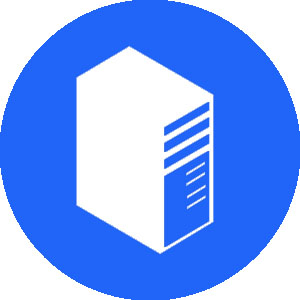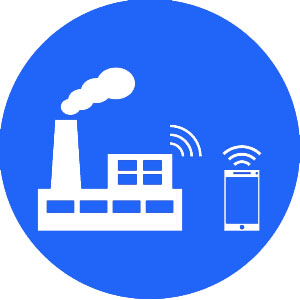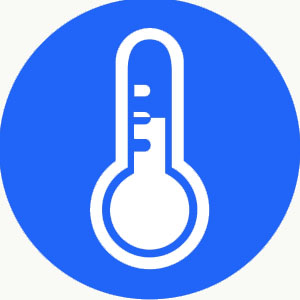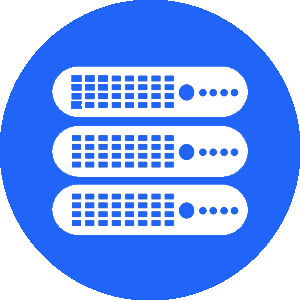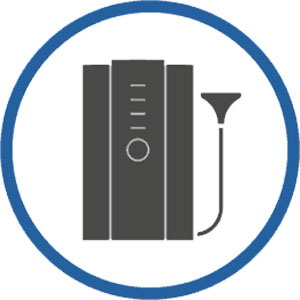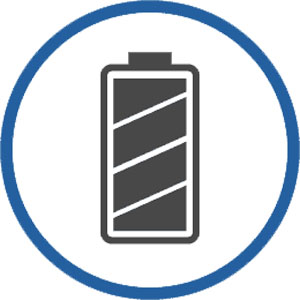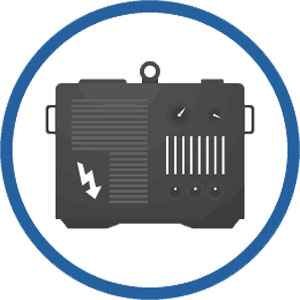How preventative maintenance ensures business continuity
Article featured in the February 2015 issue of the RISK UK: Security and Fire Management magazine (pages 35-36) http://www.risk-uk.com/issues/riskfeb15.htm
Maintaining power quality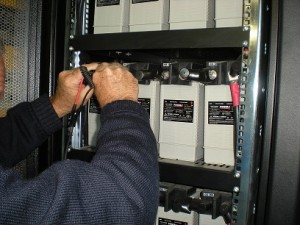
Power quality issues are becoming increasingly common and can cause serious problems for business owners who don't have preventative measures and tried and tested back up facilities in place. If your building frequently experiences flickering lights, computers locking up, blown fuses or circuit breakers unexpectedly tripping then it may be time to review your risk management programme. Rajeev Sharma discusses why it's important to monitor and maintain your incoming mains supply and ensure the regular inspection of standby power equipment.
Clean power
Distribution Network Operators (DNOs) are independent companies responsible for delivering electricity to our homes and businesses via a network of towers and cables that make up our national transmission system. If, for any reason, service levels are not met and the delivery of electricity is disrupted then, under Guaranteed Standards set by Ofgem as part of the Electricity Act (1989), DNOs must provide financial compensation. Despite these Guaranteed Standards DNOs aren't always able to provide us with a 100% reliable service. Extreme weather conditions or a mains cut off due to road works are examples of unexpected events that can't always be anticipated. In such cases DNOs have time limitations in which to restore full power. Whilst the electricity supply from the grid may be constant, it may not always be clean. Variations in the quality of electricity entering a building can have a serious impact on electrical equipment and lead to unplanned downtime, premature replacement of equipment and in extreme situations lead to serious fire risks.
Power quality issues
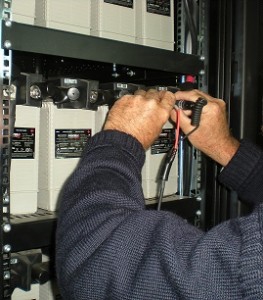 A total power blackout will cause serious disruption to business operations. Standby power systems, such as fuel cells, diesel generators and uninterruptible power supplies (UPS) will provide temporary backup measures until full power can be restored. However, even with a continuous supply there are a number of issues that can affect power quality; each one affecting electrical equipment in different ways. Brownouts are inherent in our electricity supply and can be an intentional or unintentional drop in voltage, sometimes referred to as sags. During times of peak energy demand intentional brownouts may be used for emergency load reduction to help avoid grid stress or a blackout. Extended periods of mains power reduction during brownouts or sags can lead to power supplies overheating and cause data processing equipment to lock up, fail or re-boot. Electrical storms or disturbances from inductive motors in refrigeration units, lifts and escalators for example, can lead to surges and spikes. These short bursts of high-energy voltage fluctuations, lasting only milliseconds, are responsible for the gradual degradation of electronic components such as circuit boards, processor damage and data corruption. Damage to circuits can also be caused by high-frequency electrical noise caused by faulty cabling and switchgear, flickering lighting and radio transmitters. Harmonics are current and voltage distortions within an AC electrical supply and are caused by non-linear loads connected to the distribution system. A load is described as non-linear when the current it draws does not have the same waveform as the supply voltage. Most buildings will have built-in capacity to allow for a certain amount of harmonic distortion caused by non-linear loads (usually around 15%) Anything exceeding 25% will start to cause problems such as equipment failure, overheating of switchgear, transformers and wiring circuits. Arc welders, air conditioning systems, motors, compressors, photocopiers, printers and battery charges are examples of equipment that can generate their own internal surges and cause harmonic distortion throughout a building. More common is IT equipment such as personal computers. Reflective harmonic currents pose increasingly complex challenges for facility managers of large commercial properties as personal computers become prevalent throughout entire buildings, and the number of harmonic load devices increase. Microprocessors require clean power with undistorted voltage in order to work properly. Voltage spikes (transients) can damage sensitive IT equipment. As data processing speeds increase and computer components become increasingly sensitive to voltage distortions, its important to mitigate these risks. Responsibility must lie with the consumer for the quality of power carried from a mains meter to business premises. Steps should be taken to avoid interruptions and the inherent impurities in power supply outlined above. A useful analogy is to imagine harmonic distortion as a common cold; there's no cure for it but we can treat the symptoms.
A total power blackout will cause serious disruption to business operations. Standby power systems, such as fuel cells, diesel generators and uninterruptible power supplies (UPS) will provide temporary backup measures until full power can be restored. However, even with a continuous supply there are a number of issues that can affect power quality; each one affecting electrical equipment in different ways. Brownouts are inherent in our electricity supply and can be an intentional or unintentional drop in voltage, sometimes referred to as sags. During times of peak energy demand intentional brownouts may be used for emergency load reduction to help avoid grid stress or a blackout. Extended periods of mains power reduction during brownouts or sags can lead to power supplies overheating and cause data processing equipment to lock up, fail or re-boot. Electrical storms or disturbances from inductive motors in refrigeration units, lifts and escalators for example, can lead to surges and spikes. These short bursts of high-energy voltage fluctuations, lasting only milliseconds, are responsible for the gradual degradation of electronic components such as circuit boards, processor damage and data corruption. Damage to circuits can also be caused by high-frequency electrical noise caused by faulty cabling and switchgear, flickering lighting and radio transmitters. Harmonics are current and voltage distortions within an AC electrical supply and are caused by non-linear loads connected to the distribution system. A load is described as non-linear when the current it draws does not have the same waveform as the supply voltage. Most buildings will have built-in capacity to allow for a certain amount of harmonic distortion caused by non-linear loads (usually around 15%) Anything exceeding 25% will start to cause problems such as equipment failure, overheating of switchgear, transformers and wiring circuits. Arc welders, air conditioning systems, motors, compressors, photocopiers, printers and battery charges are examples of equipment that can generate their own internal surges and cause harmonic distortion throughout a building. More common is IT equipment such as personal computers. Reflective harmonic currents pose increasingly complex challenges for facility managers of large commercial properties as personal computers become prevalent throughout entire buildings, and the number of harmonic load devices increase. Microprocessors require clean power with undistorted voltage in order to work properly. Voltage spikes (transients) can damage sensitive IT equipment. As data processing speeds increase and computer components become increasingly sensitive to voltage distortions, its important to mitigate these risks. Responsibility must lie with the consumer for the quality of power carried from a mains meter to business premises. Steps should be taken to avoid interruptions and the inherent impurities in power supply outlined above. A useful analogy is to imagine harmonic distortion as a common cold; there's no cure for it but we can treat the symptoms.
Preventative measures
The starting point for any effective risk management programme should include a power analysis. This provides intelligent information about the power quality and electrical consumption of a building. Monitoring the power over a period of between two to seven days will give an accurate picture and ensure that times of peak energy demand are included.
Inspections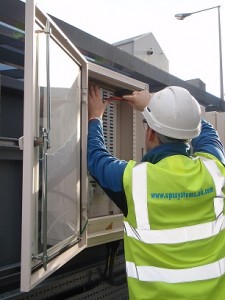
NICEIC registered electricians should carry out regular inspections and testing. A carefully planned preventative maintenance schedule should include the testing of all standby power equipment such as generators, UPS or fuel cells, and a controlled mains failure test. Its surprising just how many businesses are reluctant to test their mains power even under controlled conditions. It seems nobody wants to be responsible for potential disruptions to business operations. However, testing can be carried out in a safe way by first identifying critical and non-critical loads, as different systems require different levels of power protection. Critical systems are those that cannot be allowed to fail. They must be kept operational for as long as possible, if not indefinitely. If the equipment was not designed to withstand power breaks of more than 4 or 5 milliseconds, it will certainly require an uninterruptible power supply (UPS). The UPS will condition incoming power and protect against relatively short periods of power loss. Extended periods will be covered by stored energy (typically additional UPS batteries) or locally generated energy (a diesel generator or fuel cell). Critical systems require both UPS and generator standby power. Sensitive systems comprise electronic equipment that require a clean shutdown and cannot withstand power fluctuations or the delay in starting up a generator. They require a UPS to provide power to the equipment whilst it shuts down cleanly and, if required, completes a backup. Sensitive systems require UPS Standby Power. Essential systems are those that must be supplied with power in the event of a power failure, but can withstand a short power interruption. This can be, depending on the type and size of the generator, a delay of between 15 to 30 seconds before the generator starts to support the electrical systems. There are other alternative sources of power, but a diesel generator is the most common. Essential systems require generator standby power. Other electrical loads are those that can be allowed to fail and, in doing so, will not compromise critical systems, the health and safety of staff or customers, and will not damage the equipment in any way. Other systems may not require any standby power. Equipment categories
- Critical systems require both UPS and generator standby power
- Sensitive systems require UPS standby power
- Essential systems require generator standby power
- Other systems may not require any standby power
Heat and infrared imaging
Early fault detection will reduce the chances of equipment failure and unscheduled downtime. The use of hand-held thermal imaging cameras (TIC) or thermography provides an effective diagnostic tool to help detect hot spots in electrical installations without interruption to supply. TICs are safe to use as theres no point of contact with any live devices. This allows potential problems to be easily identified under full-load without putting engineers at risk. TICs will detect weak spots in fuses, poor connections or energy loss through incorrectly insulated fixtures before they breakdown. Preventative maintenance measures such as this will save customers money by allowing a programme of electrical remedial repairs to be implemented, preventing loss of productivity further down the line. Thermal imaging should be considered an essential part of routine electrical maintenance.
Load bank testing
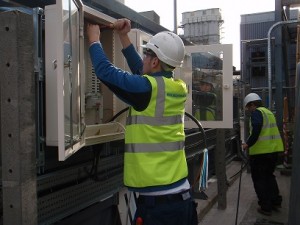 Like a car engine, back-up generators require frequent use to keep them working efficiently and, in order to ensure integrity and emergency preparedness, should be tested at least once a month. Testing off-load can cause poor combustion, soot formation, clogging of injector rings and unburnt fuel creating oil contamination. Fuel kept in storage for extended periods of time can lead to further deterioration and damage. Standby generators should be tested on-load and at full capacity, making it an ideal way to prove engine resilience and optimise performance. Full resistive load bank testing will push the unit to its limits so you can be sure it will work efficiently when you need it. Regular testing of standby power generators (and UPS) will also ensure the auto-start function works effectively and provides an automatic transfer of instant power from the mains to the generator for business critical processes.
Like a car engine, back-up generators require frequent use to keep them working efficiently and, in order to ensure integrity and emergency preparedness, should be tested at least once a month. Testing off-load can cause poor combustion, soot formation, clogging of injector rings and unburnt fuel creating oil contamination. Fuel kept in storage for extended periods of time can lead to further deterioration and damage. Standby generators should be tested on-load and at full capacity, making it an ideal way to prove engine resilience and optimise performance. Full resistive load bank testing will push the unit to its limits so you can be sure it will work efficiently when you need it. Regular testing of standby power generators (and UPS) will also ensure the auto-start function works effectively and provides an automatic transfer of instant power from the mains to the generator for business critical processes.
Remote monitoring
Remote monitoring tools, such as UPS System's plc REMO, provide continuous status reports for UPS and generators, giving facilities/IT managers valuable updates on the most important aspects of their systems and equipment whenever they need them. Automatic text alerts or emails can be sent to designated personnel alerting them to low fuel levels in diesel generators, battery charge levels, system temperatures and overloads, as well as mains grid failures and other critical information. Reports generated from building management systems will also provide a history of power supply issues within a building, allowing remedial work to be more easily identified.
Summary
Electrical equipment and IT systems are sensitive to fluctuations in electrical power supplies. Inherent power quality issues can be caused by both external and internal factors. Mitigating these risks will avoid degradation and premature replacement of equipment; avoid unscheduled downtime and maintenance to business operations, and prevent components overheating and potentially causing fire. An initial power analysis will provide a health check for your business and indicate which preventative maintenance measures may be required to ensure a safe working environment and maintain business continuity.
If you have any questions you can contact us here. We offer a wide range of diesel generators including 60kva generator, 80kva generator, and 100kva generator from a wide range of manufacturers including AKSA generator. We also aoffer a wide range of uninterruptible power supplies including those from Riello UPS.









